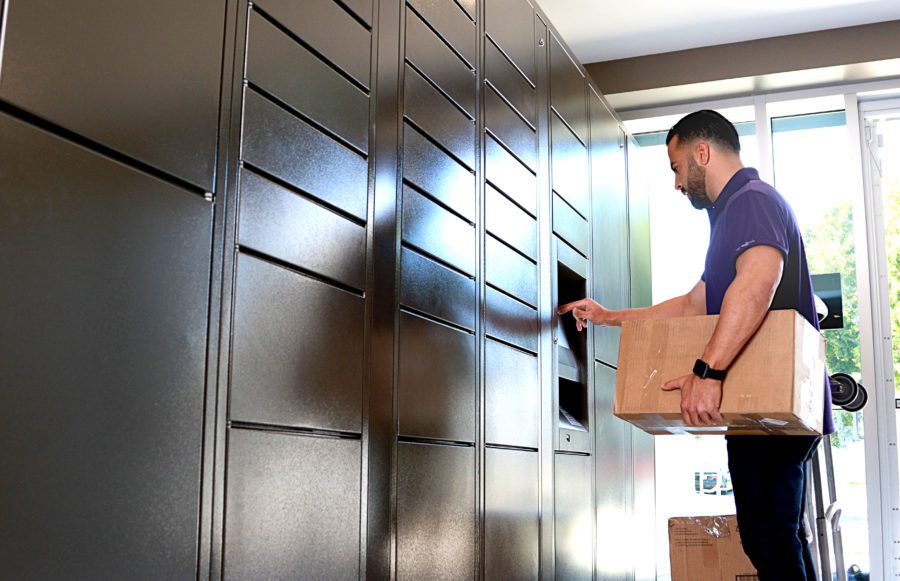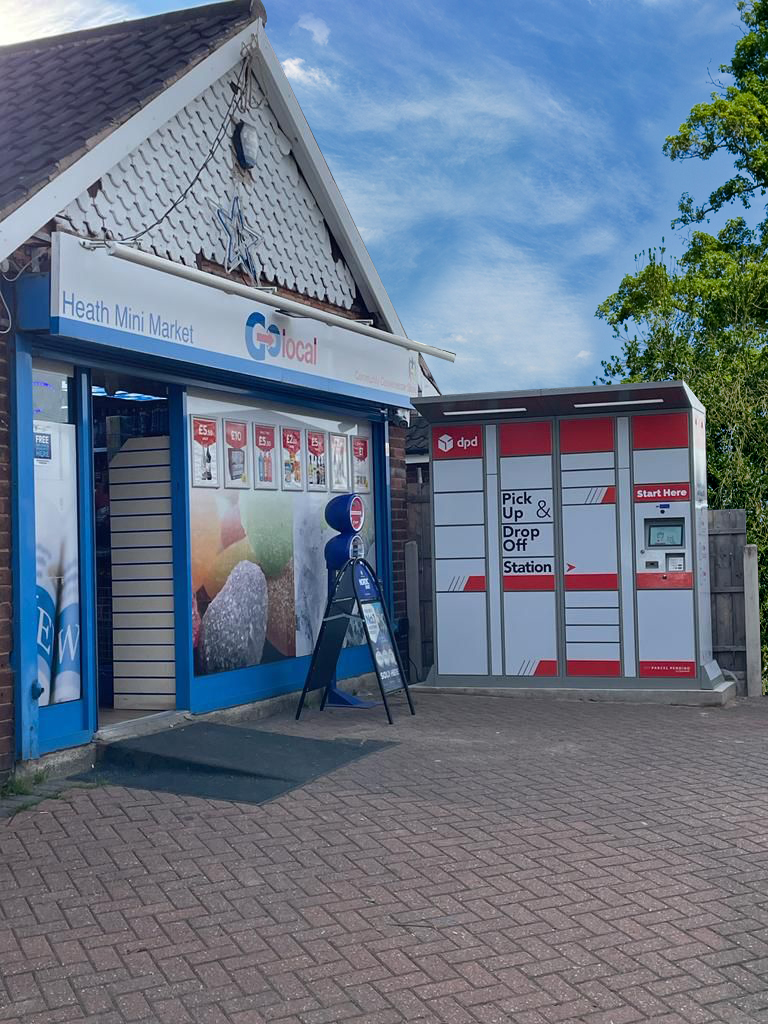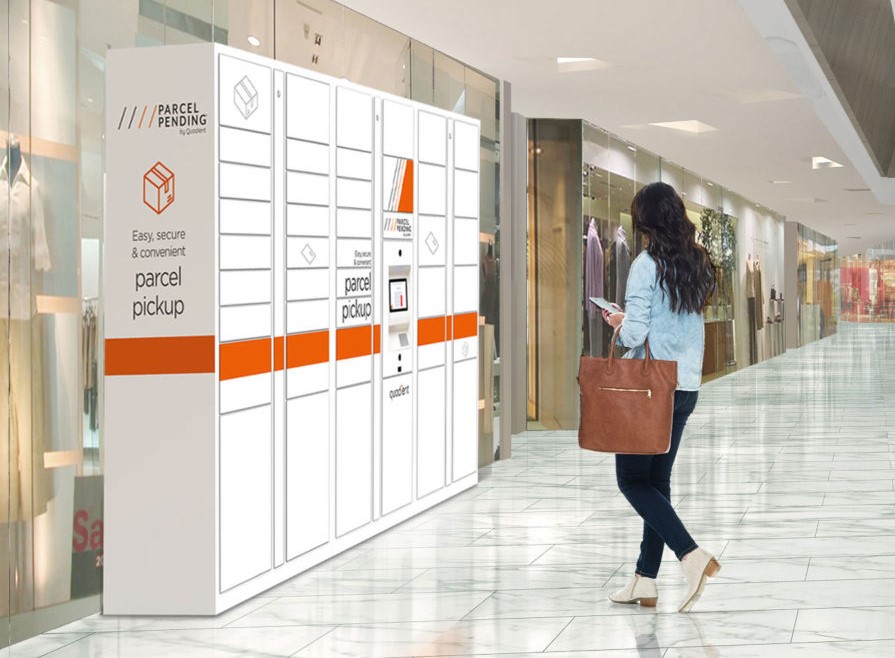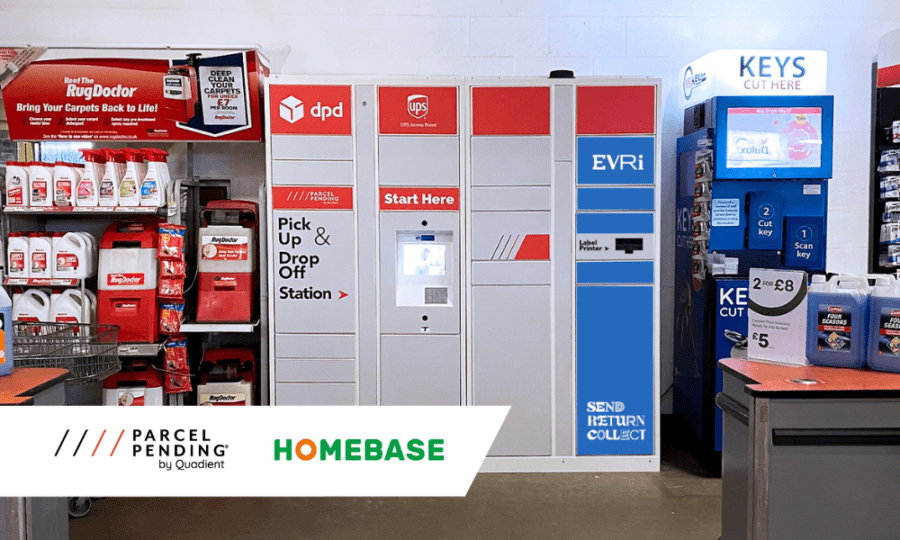
Our Blog
How to Improve Last Mile Logistics
11 Min Read
Written by: Parcel Pending
Last-mile logistics (also known as last-mile delivery) has become a focus for many businesses – so important, in fact, that it is reshaping supply chains around the world. This trend is not new; rather, it stems from the rapid adoption of online shopping and increased consumption that many industries have seen since the start of the pandemic in early 2020. More specifically, this renewed focus on last-mile logistics is directly related to increased consumer demand for faster delivery.
The typical customer is not only expecting tighter delivery windows (next-day or same-day delivery is preferred), but their purchase frequency is also increasing – particularly as they complete even more of their shopping online. Online shopping is the future of grocery retail, clothing retail, and most other forms of retail shopping. And, with shopping on mobile devices expected to rise over the coming years, the last-mile problem challenging fulfillment and delivery service companies (and its associated delivery constraints) isn’t going anywhere any time soon. If you’re wondering “what is a fulfillment center?”, check out our related blog post for all the details you need to know.
Understanding the current efforts to optimize last or final-mile delivery is essential for adapting to shifts in supply chain logistics and shipping costs. These final-mile delivery challenges and changes impact all industries, not just delivery companies or third-party logistics providers. Last-mile logistics knowledge is even valuable for recipients, such as the end consumer, to help gain a better understanding of how last-mile delivery logistics are shaping the way purchases reach their final delivery destination (e.g., delivery time) and the way we shop.
There are many significant changes happening in last-mile logistics now, including a greater reliance on automation, the incorporation of crowdsourcing into the supply chain, and existing technologies and last-mile delivery software being leveraged in new and innovative ways. In this article, we’ll break down some basics about last mile logistics, including what last mile logistics is, why it’s important, what trends are affecting last mile logistics, last-mile delivery challenges, and what changes are occurring in response to the last-mile problem.
What is Last Mile Logistics?
Last-mile logistics (or last-mile delivery) is a term that refers to the services and operations that facilitate the final leg of delivery for packages. Last-mile logistics may sound like a broad term, so let’s get an exact understanding of what it covers. This term specifically refers to the act of delivering a package to a consumer; in other words, last-mile logistics is usually synonymous with residential delivery.
Most consumers don’t spend much time thinking about a package’s delivery time or delivery route (or how a package arrives at our door). We simply go online, purchase the product we want with the appropriate shipping window for our needs, and wait for our purchase to arrive. For the consumer, online shopping is relatively frictionless. This convenience is one of the big appeals of online shopping, but it also obscures the majority of what is happening behind the scenes. In reality, this supply chain, the one responsible for you receiving your package on time, is incredibly complex.
Last-mile logistics is a term that refers to the services and operations that facilitate the final leg of delivery for packages (or last mile delivery). This may sound like a broad term, so let’s get an exact understanding of what’s covered in a discussion related to last-mile logistics. Last mile logistics specifically refers to the act of delivering a package to a consumer; in other words, last-mile logistics is usually synonymous with residential delivery.
Typical business-to-business (B2B) fulfillment and shipping is not included as a part of last-mile delivery, although many businesses are now taking advantage of the last-mile logistics infrastructure and to meet customer expectations for faster shipping and smaller shipment sizes (issues typically associated with residential deliveries).
Over the past few years, many areas of the supply chain have adapted to meet changing customer demand – including increased delivery speed and improved efficiency of last-mile logistics. Now, in the wake of the pandemic, the last-mile logistics industry is focused on the maturation of its underlying technologies and how these technologies can make the last-mile delivery process even faster and more efficient.
What Trends Are Affecting Last Mile Logistics?
In recent years, you may have noticed significant shipping delays when shopping online or shortages of certain items in retail stores. You may have even read about a few events that impacted last-mile logistics (shipping container shortages or the Ever Given getting stuck in the Suez Canal, for instance). Quite a bit has changed over the past few years that has directly contributed to last-mile delivery and the way that businesses have adapted to address e-Commerce delivery pain points and better serve their target customer.
The first (and most prominent) change is increased customer adoption of eCommerce. eCommerce businesses – which were already on the rise before 2020 – saw sales spike in light of the pandemic. This trend has been led in particular by online retail and fulfillment giants like Amazon. In fact, this trend is so synonymous with the online retailer that it has been coined “the Amazon effect.”
Amazon’s Prime program, in particular, has had a significant impact on last-mile logistics. As part of the cost of their Amazon Prime subscription, a customer receives free two-day shipping for most items sold on Amazon. This subscription model has, over time, begun to shape consumer expectations for other retailers. This shift has a direct tie to the next big change in last-mile delivery service: a consumer shopping online now has an expectation that they will receive their purchase the next day, either with free or low-cost shipping.
While Amazon may have been the first retailer to provide this delivery model, many other major retailers have adopted similar programs to remain competitive. In fact, most online retailers now offer some type of free expedited shipping option (usually tied to a predetermined cart value) – and with good reason. Free shipping continues to be the top incentive to drive repeat purchases, followed by one-day shipping, free returns/exchanges, and easier online returns.
Amazon has also shaped the market in other ways. Recently, they introduced same-day shipping options for some urban markets and services (Whole Foods grocery delivery, for instance), and other retailers have started to do the same. Now, both Amazon and other retailers are struggling with how to meet the growing demand for rapid and even same-day shipping. Meeting these customer expectations requires reorganizing far more than just a delivery route for it to work.
Because of these two major changes, the last mile of delivery has become increasingly expensive. Now, retailers are challenged to offer expedited shipping at a low cost (or for free) to stay competitive while also remaining profitable. The delivery cost for residential areas can be substantial (particularly for rural areas) if packages aren’t routed through a courier company that offers free residential delivery service, such as the United States Postal Service. This presents a further challenge for retailers looking to offer next-day or same-day delivery to improve customer satisfaction.
Ways to Improve Last-Mile Logistics
Now that we have a firm understanding of what last mile logistics is and what trends are shaping it, we can begin to explore some of the ways that final mile logistics is changing to adapt to customer expectations and increases in customer demand. In general, these changes revolve around finding ways to increase the efficiency of goods transportation through optimized shipping networks – namely, optimizing the logistics of moving goods from a final fulfillment or distribution center to the end consumer. Here are a few of the ways that businesses are optimizing last-mile delivery to the customer:
Bringing Distribution Centers Closer to Major Customer Markets
One way that retailers can optimize the transportation of their goods to customers is by bringing distribution centers closer to their core customer markets. In fact, many retailers are beginning to bring their products closer to end consumers than ever before.
This is yet another innovation that started with Amazon, which implemented warehouses near key urban markets to stage products close to where their consumers were. By building a transportation hub in an urban market, businesses can capture a larger portion of sales by offering expedited shipping. This enabled them to have items ready to pick off the shelves and deliver them to customers quickly and efficiently. Now, many retailers, even smaller retailers, share tenancy in large warehouses to reduce the cost of both storage and fulfillment. However, the challenge remains that not every online shopper lives near these urban areas.
While rural shoppers have greater access to online goods than ever before, they don’t have the same access to expedited shipping options. This is because many businesses (even a logistics company like UPS or FedEx) leverage the USPS to bring goods to their final delivery destination – a process that can take as many as 5 days for rural areas when demand is high.1 It just isn’t cost-effective for retailers to build their own extensive shipping networks in rural areas. This, unfortunately, means that rural-based shoppers likely cannot receive items via same-day delivery or even within two days – at least not yet.
Using Existing Technology in New Ways
There are several ways that shippers are improving last-mile logistics through the use of technology, such as last-mile delivery software. For instance, shipment tracking and routing software have improved immensely. These improvements allow shippers to route and track shipments more efficiently while also giving them access to large amounts of data about where their products are going, how long it takes for the products to reach their intended destinations, and what their final delivery destinations are. This data also gives shippers the ability to further optimize their supply chain logistics over time.
Many shippers are now looking for new and innovative ways to incorporate smart technology into the last-mile delivery process. For instance, companies are exploring using unmanned drones or robots to deliver packages to a customer’s home. While many of these innovations are still in the development stage, the potential sounds promising. Drones or delivery robots could more efficiently deliver goods by reducing or altogether eliminating traffic congestion while also reducing fuel costs associated with traditional delivery methods.
In addition to drone technology, some companies are exploring using crowdsourcing or gig service workers as a means to optimize last-mile delivery. This works in the same way that other crowdsourcing technologies work: individuals opt-in to a program, then pick up packages from a nearby distributor and drop them off directly on a customer’s doorstep.
For example, Best Buy employs multiple delivery services to provide faster order fulfillment. During the 2020 holiday shopping season, Macy’s and Bloomingdales partnered with delivery services to get orders to online shoppers quickly. Even cannabis retailers are servicing shoppers with a same-day delivery experience, with some California dispensaries reporting 200% growth on Cyber Monday 2020 vs. 2019.2
Implementing Smart Parcel Lockers
Many retailers are turning to retail locker solutions as a means to expedite delivery for their customers. While the traditional delivery process requires a delivery driver to bring many packages to many locations, the delivery process with smart parcel lockers instead allows a delivery driver to deliver many packages to one location. In many cases, the retailer is able to fulfill orders from their own inventory.
Given growing consumer demand for free expedited shipping options, last-mile delivery optimizations are critical to meet rapidly changing demand and ensure business continuity. “[Retailers need] a strategy to reduce supply chain costs because residential home delivery at no charge is not scalable,” Austin Maddox, Executive Vice President, North American Parcel Locker Solutions at Parcel Pending by Quadient, says of the shift from home delivery to logistics solutions like parcel locker solutions. “It’s not financially feasible, and it’s not good for the environment. There’s going to be pressure on retailers and carriers to find more sustainable delivery models.”
By using smart parcel lockers as a last-mile logistics solution, a shipper can meet customer demand for faster shipments without compromising on convenience or security. With an electronic locker, deliveries are logged directly into the locker system, which notifies customers or recipients automatically when a package arrives in their name. The lockers securely store the item until the customer can pick it up – allowing them to retrieve their order at their convenience. And, because parcel lockers log each delivery and pick-up and are capable of being monitored with security cameras, they are generally much more secure than simply leaving a package on the customer’s doorstep.
This helps solve one of the biggest challenges that have emerged alongside the increase in eCommerce orders: securing packages once they have been delivered. Many shippers have begun adopting delivery verification methods, such as having the delivery driver take a picture of where the package was delivered. And on the receiving end, more and more consumers are adopting smart security technology to record common areas where packages are delivered. However, these methods are only realistic for permanent residences.
For shared residences, such as apartment communities, multifamily parcel lockers have played a key role in ensuring delivery security. Similar to retail parcel lockers, this product is one of several innovative property management solutions that can help attract new residents to a multifamily property.
The Last Mile Delivery Challenge
Efficiency gains in last-mile logistics affect us all in some ways. Most people are accustomed to frequently receiving packages, and an increasing number are using services that deliver groceries and other household goods within a next-day or same-day timeframe. This trend is expected to pick up momentum in the coming years, meaning that the changes occurring in last-mile logistics will only continue.
Shippers will need to continue to explore innovative ways to enhance their delivery services and delivery networks while still ensuring that the last-mile delivery cost is kept low so that retailers can continue to offer free or low-cost shipping. At the same time, other stakeholders in the process will need to adopt parcel lockers and other means of streamlining and securing deliveries on a more widespread scale if they hope to cope with rapidly changing consumer demand.
It’s important to recognize that last-mile logistics does not just affect shippers and consumers, but rather all of the support systems that serve both groups. This all ties back into supply chain management. The next time you click the “order” button on your favorite online retailer’s website and choose a free, expedited shipping option, consider the ways that your consumption patterns have shifted and how retailers and logistics providers have adapted to accommodate them.
Parcel Pending by Quadient is the leading provider of package management solutions for residential, commercial, retail, and university properties in the United States and Canada. With more than 72 million packages successfully delivered annually, our company offers a wide range of solutions that ensure the simple and secure delivery and retrieval of packages and online orders. With the strength of our combined power, reach, and offerings, Parcel Pending by Quadient provides state-of-the-art solutions and world-class customer service to solve the last-mile delivery challenge and improve your retail operations.
Looking to improve your consumers’ post-purchase experience? For more information about how Parcel Pending by Quadient’s retail parcel pick-up lockers and parcel distribution solutions can improve your customer experience, contact one of our package management experts today.
Sources:
- Kim, Catherine. Vox. If the US Postal Service fails, rural America will suffer the most. (2020, April 16). https://www.vox.com/identities/2020/4/16/21219067/us-postal-service-shutting-down-rural-america-native-communities.
- Sandy, Eric. Cannabis Dispensary Magazine. 2020 Saw the Rise of Cannabis Delivery. (2020, December 21). https://www.cannabisdispensarymag.com/article/cannabis-delivery-trends-2020/.





